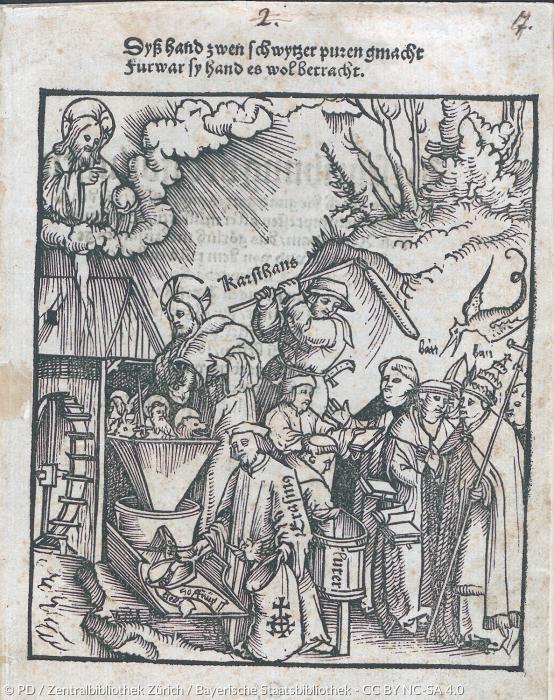Source
The text of the broadsheet read: And quickly headed to the mill So that he would arrive in time Deal with the mill and start to grind He, the Holy Scriptures’ servant swift, Like flour teaches us to sift Scriptures, texts so manifold To keep its taste truly sweet and bold." 
"Erasmus observed this really well
Source: Martin Seger, Dyss hand zwen schwytzer Puren gmacht, fürwar
sy hand es wol betracht. Getruckt zuo Zürich : [Christoph Froschauer the
Elder], [1521] (Zentralbibliothek Zürich, Zwingli 106:
a.1).
Broadsheet, woodcut designed by Ulrich Zwingli and Johannes
Füssli.